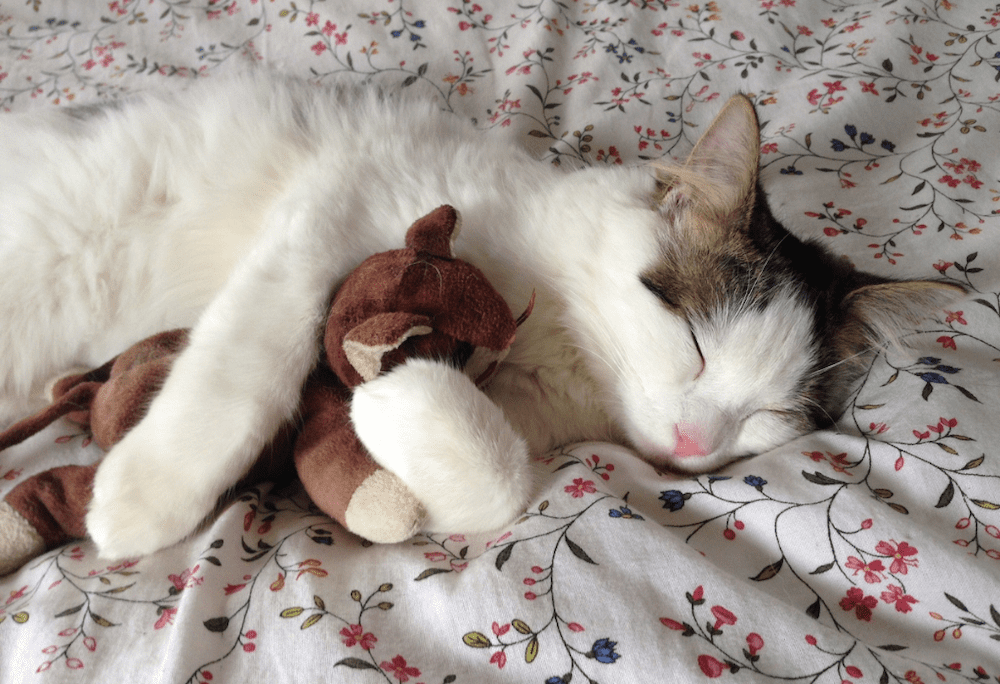
Cat Sniffling and Sneezing? How to Recognize and Treat Flu in Cats
Jan 26 2023.
While there are a few ways to recognize a sick cat, it’s not always easy to tell exactly what may be ailing your kitty. Now that it’s winter and colder weather is setting in, you may be concerned about Mr Whiskers catching cat flu. Worried about your fur friend coming down with the flu? Below, Cat in a Flat explains everything you need to know to recognize and treat flu in cats.
Table of contents
What is cat flu?
Similar to human flu, cat flu is a cold-like virus that can affect your kitty’s upper respiratory tract. One of the most common forms of transmission is when an infected cat passes it on through discharge from their nose and eyes, or through saliva. However, cat flu may spread through air-borne methods as well. Virus particles can survive up to a week in the environment, which means it can also spread through infected toys, bowls, clothing, and bedding the sick kitty has been in contact with.

How to know if your cat is sick
Cat flu is a common illness and usually isn’t serious in healthy adult cats. However, if your kitty is very young, elderly, or has another illness, cat flu can potentially be dangerous. No matter what, make sure to take your fur friend to the vet if you notice any of the following flu symptoms:
- Runny eyes and nose.
- Sore throat. Cats can say a lot with their meows. Listen for changes in your feline’s ‘voice’. If they sound softer, raspier, or weaker than normal, (or lose their meow completely) it could be a sign of a sore throat. Also watch your cat’s eating habits. A loss in appetite or sudden drooling can be indicators of a sore throat related to cat flu.
- Mouth ulcers. A loss in appetite may also point to mouth ulcers. To look for ulcers, gently pull up your kitty’s top lip and check for redness and irritation around the gums.
- Sneezing.
- Fever. Shivering can be both a sign of a freezing cat and may also indicate a cat flu related fever. If your kitty experiences a loss of appetite, weakness and lethargy, and shivering, they may have a fever. (Note: It’s a myth that you can tell if a cat has a fever by feeling if their nose is warm and dry. Instead, watch out for other fever symptoms and take your cat to the vet if you notice these.)
How do I keep my cat from getting the flu?
While there is no cure for cat flu and no way to completely prevent it, there are some measures you can take to keep your kitty safe and healthy. Because there are many strains of the virus, a vaccine can’t be effective against all of them. Still, the best course of preventative action is for your cat to get a flu vaccine. This may require two initial vaccines followed by regular boosters. Talk to your vet about whether the cat flu vaccine is a good option for your feline.
If you’re going away on holiday and need to board your kitty at a cattery or hire a cat sitter, it’s important in both cases to make sure they’re up to date on all their vaccines. At a cattery, the cat flu vaccine will help prevent your furry friend from picking up illnesses from other cats. And even if you hire a cat sitter to look after your kitty in the safety of your home, it’s still vital that they have their flu vaccine. Your cat sitter can carry the virus with them on their clothes or hands when they go to see other kitty clients. The best way to protect your fur friend and other kitties is by making sure Mr Whiskers is vaccinated!
How to treat your cat’s flu
First things first, you should take your feline to the vet if you notice any cat flu symptoms. Your veterinary will be able to diagnose your kitty and prescribe a treatment plan. It’s possible your vet may suggest a course of antibiotics and a special diet for your cat. However, the bulk of care will happen at home with you. Besides the usual daily essential cat care, there are a few other things to do to help your kitty recover from cat flu.
Help your cat stay hydrated
A sore throat or mouth ulcers can stop a cat from drinking and eating, which puts them in danger of dehydration. Offer your kitty sloppy foods such as sardines, tuna, and pilchards, and mix water in with their food. These are good ways to ensure your cat drinks enough water while ill.
Help your cat breathe
Steam can also free up your kitty’s sinuses. Your cat loves following you the bathroom under normal circumstances, so encourage it when your kitty is sick! The steam from your bath or shower can have positive health benefits for your cat.
Help clean your cat’s nose and eyes
If you notice discharge from your kitty’s nose or eyes, gently wipe it away with a cotton wool pad soaked in warm water. Keep an eye out for eye ulcers, as these can be common with cat flu—especially amongst kittens. If left untreated, an eye ulcer can cause long-term damage or even blindness. If you notice your fur friend’s eye looks sore or is partially closed, seek immediate veterinary attention. Your vet can prescribe drops to help treat your kitty’s eye ulcers.
Want to know more about keeping your kitty healthy? Check out our blog posts on how to spot food allergies in cats and how to know if your cat has diabetes.
- #catinaflat
- #catsitting
- #pet care
- #pet sitting
- Cat Care
- cat flu
